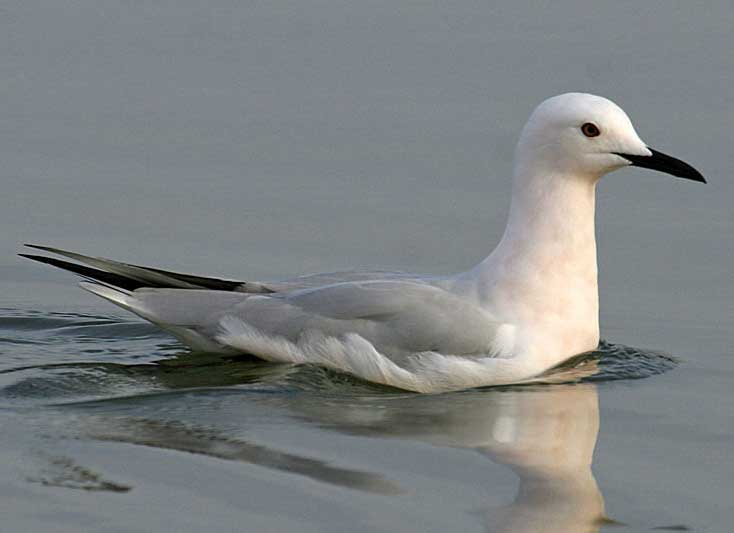
Chroicocephalus genei (Information about this image)
Superregnum: Eukaryota
Cladus: Unikonta
Cladus: Opisthokonta
Cladus: Holozoa
Regnum: Animalia
Subregnum: Eumetazoa
Cladus: Bilateria
Cladus: Nephrozoa
Superphylum: Deuterostomia
Phylum: Chordata
Subphylum: Vertebrata
Infraphylum: Gnathostomata
Megaclassis: Osteichthyes
Cladus: Sarcopterygii
Cladus: Rhipidistia
Cladus: Tetrapodomorpha
Cladus: Eotetrapodiformes
Cladus: Elpistostegalia
Superclassis: Tetrapoda
Cladus: Reptiliomorpha
Cladus: Amniota
Classis: Reptilia
Cladus: Eureptilia
Cladus: Romeriida
Subclassis: Diapsida
Cladus: Sauria
Infraclassis: Archosauromorpha
Cladus: Crurotarsi
Divisio: Archosauria
Cladus: Avemetatarsalia
Cladus: Ornithodira
Subtaxon: Dinosauromorpha
Cladus: Dinosauriformes
Cladus: Dracohors
Cladus: Dinosauria
Cladus: Saurischia
Cladus: Eusaurischia
Subordo: Theropoda
Cladus: Neotheropoda
Cladus: Averostra
Cladus: Tetanurae
Cladus: Avetheropoda
Cladus: Coelurosauria
Cladus: Tyrannoraptora
Cladus: Maniraptoromorpha
Cladus: Maniraptoriformes
Cladus: Maniraptora
Cladus: Pennaraptora
Cladus: Paraves
Cladus: Eumaniraptora
Cladus: Avialae
Infraclassis: Aves
Cladus: Avebrevicauda
Cladus: Pygostylia
Cladus: Ornithothoraces
Cladus: Ornithuromorpha
Cladus: Carinatae
Parvclassis: Neornithes
Cohors: Neognathae
Cladus: Neoaves
Ordo: Charadriiformes
Subordo: Lari
Familia: Laridae
Subfamilia: Larinae
Genus: Chroicocephalus
Species: Chroicocephalus genei
Name
Chroicocephalus genei (Brème, 1839)
Synonyms
Larus genei (protonym)
References
Revue Zoologique, par la Société Cuvierienne 2: 321.
Vernacular names
беларуская: Танкадзюбая чайка
български: Дългоклюна чайка
čeština: Racek tenkozobý
Deutsch: Dünnschnabelmöwe
English: Slender-billed Gull
Esperanto: Maldikbeka mevo
español: Gaviota picofina
français: Goéland railleur
magyar: Vékonycsőrű sirály
Nederlands: Dunbekmeeuw
português: Gaivota-de-bico-fino
Türkçe: İnce gagalı martı
The slender-billed gull (Chroicocephalus genei) is a mid-sized gull which breeds very locally around the Mediterranean and the north of the western Indian Ocean (e.g. Pakistan) on islands and coastal lagoons. Most of the population is somewhat migratory, wintering further south to as far as North Africa and India. A few birds have wandered to western Europe. A vagrant individual was reportedly seen on Antigua, April 24, 1976 (AOU, 2000).
The genus name Chroicocephalus is from Ancient Greek khroizo, "to colour", and kephale, "head". The specific genei commemorates Italian naturalist Giuseppe Gené.[2]
Description
This species is 37 to 40 cm (14.6 to 15.7 in) long with a 90 to 102 cm (35.4 to 40.2 in) wingspan. It is therefore slightly larger than the black-headed gull, which it resembles, although it does not have a black hood in summer. It has a pale grey body, white head and breast and black tips to the primary wing feathers. The head and dark red bill have an elongated tapering appearance, and this bird also appears long-necked. The legs are dark red, and the iris is yellow. In summer, the breast has a faint pink colouration. This bird takes two years to reach maturity, as is usual in gulls. First year immature birds have a black terminal tail band, and dark areas on the wings.[3]
Distribution and habitat
The slender-billed gull breeds in lagoons and lakes around the Mediterranean Sea and in similar locations in countries bordering the northwestern part of the Indian Ocean. In 2010 a successful colony was found breeding on an island in a mountain lake in Algeria. The lack of predators and disturbance allowed over 98% of the eggs to hatch.[4] It overwinters on the coast in estuaries and bays. It feeds in deltas, marshes and grassland. It is one of a number of species of gull to feed on landfill sites.[3]
Behaviour
About half of the slender-billed gull's food is fish. It flies a few metres above the surface of the water and dives into the water when it sees suitable prey. It also probes in the mud with its beak to feed on marine invertebrates and catches insects in flight.[3]
This rather uncommon gull breeds in colonies, nesting on the ground and laying up to three brown-spotted white eggs in a scrape sparsely lined with feathers and bits of vegetation. Incubation takes about 25 days and the young fly after another 25 days. Like most gulls, it is gregarious in winter, both when feeding and in evening roosts. It is not a pelagic species, and is rarely seen far from land.[3]
Status
The slender-billed gull is one of the species to which the Agreement on the Conservation of African-Eurasian Migratory Waterbirds (AEWA) applies.
References
Wikimedia Commons has media related to Chroicocephalus genei.
BirdLife International (2019). "Larus genei". IUCN Red List of Threatened Species. 2019: e.T22694428A154570382. doi:10.2305/IUCN.UK.2019-3.RLTS.T22694428A154570382.en. Retrieved 6 March 2022.
Jobling, James A (2010). The Helm Dictionary of Scientific Bird Names. London: Christopher Helm. pp. 104, 171. ISBN 978-1-4081-2501-4.
"Larus genei: Slender-billed Gull" (in French). Oiseaux.net. Retrieved 2013-12-12.
Cherief-Boutera, N.; Bensaci, E.; Cherief, A.; Moali, A. (2013). "First confirmed breeding of the Slender-billed Gull Chroicocephalus genei in Algeria". Alauda. 81 (2): 85–90.
Retrieved from "http://en.wikipedia.org/"
All text is available under the terms of the GNU Free Documentation License

